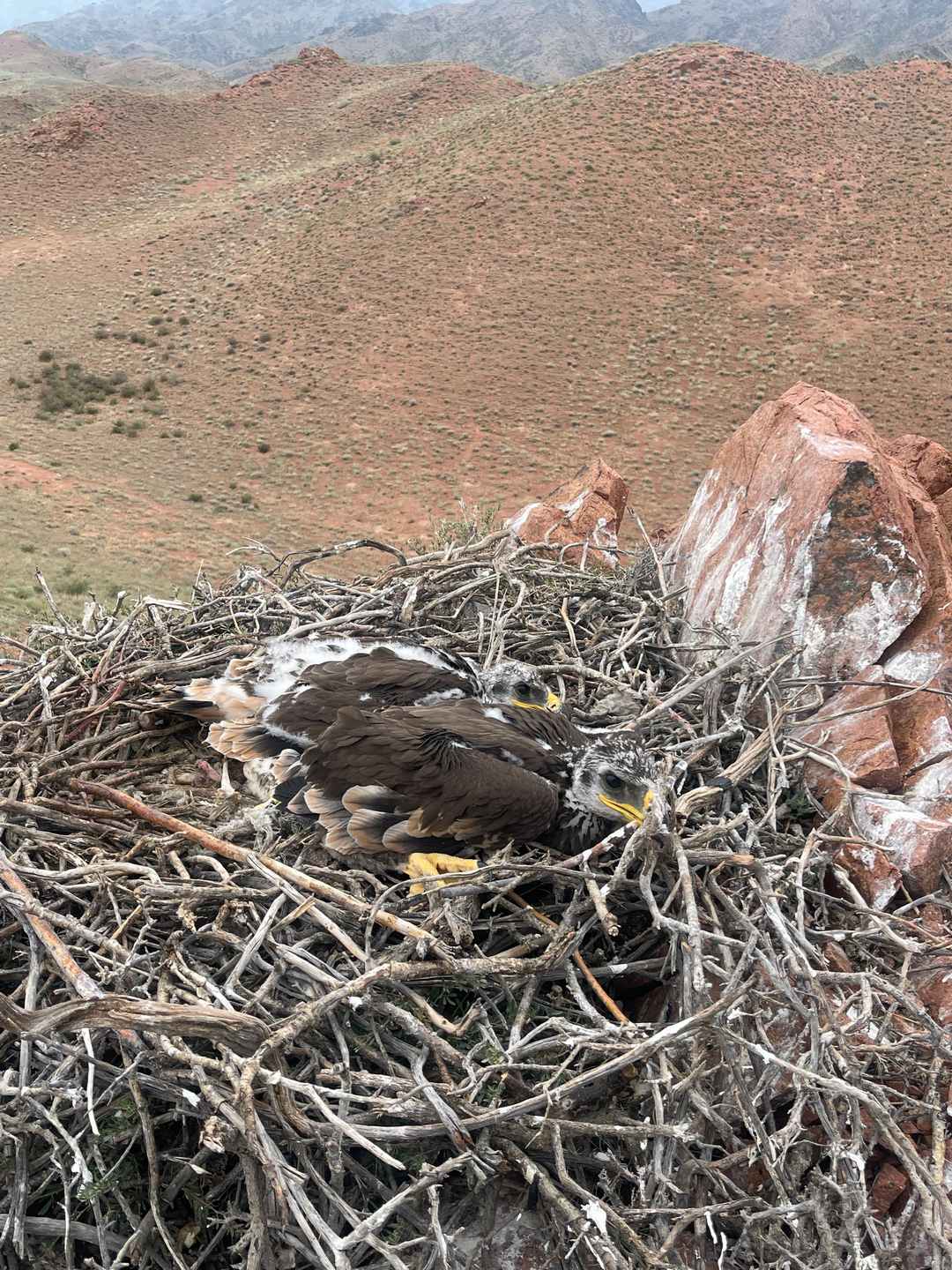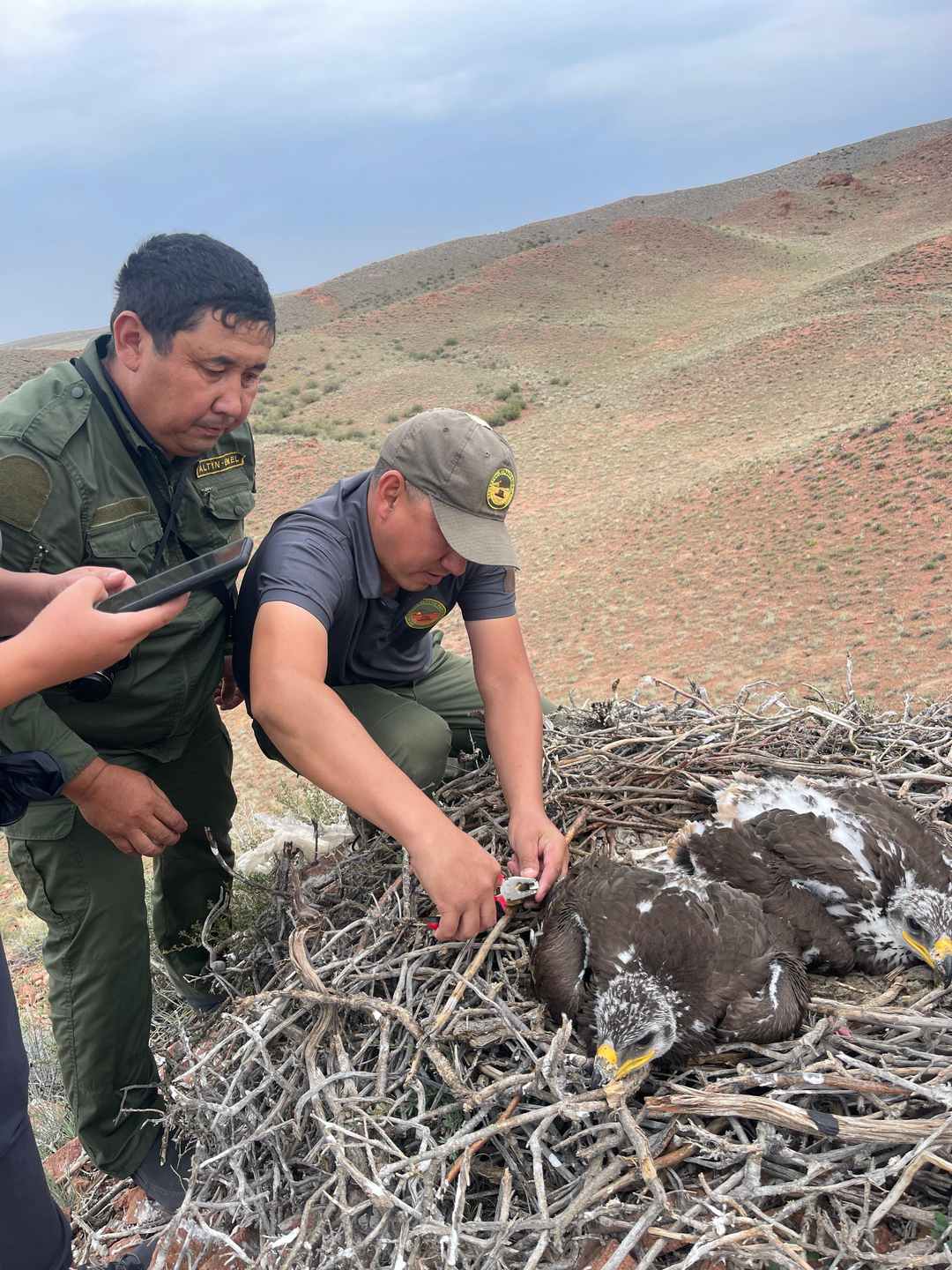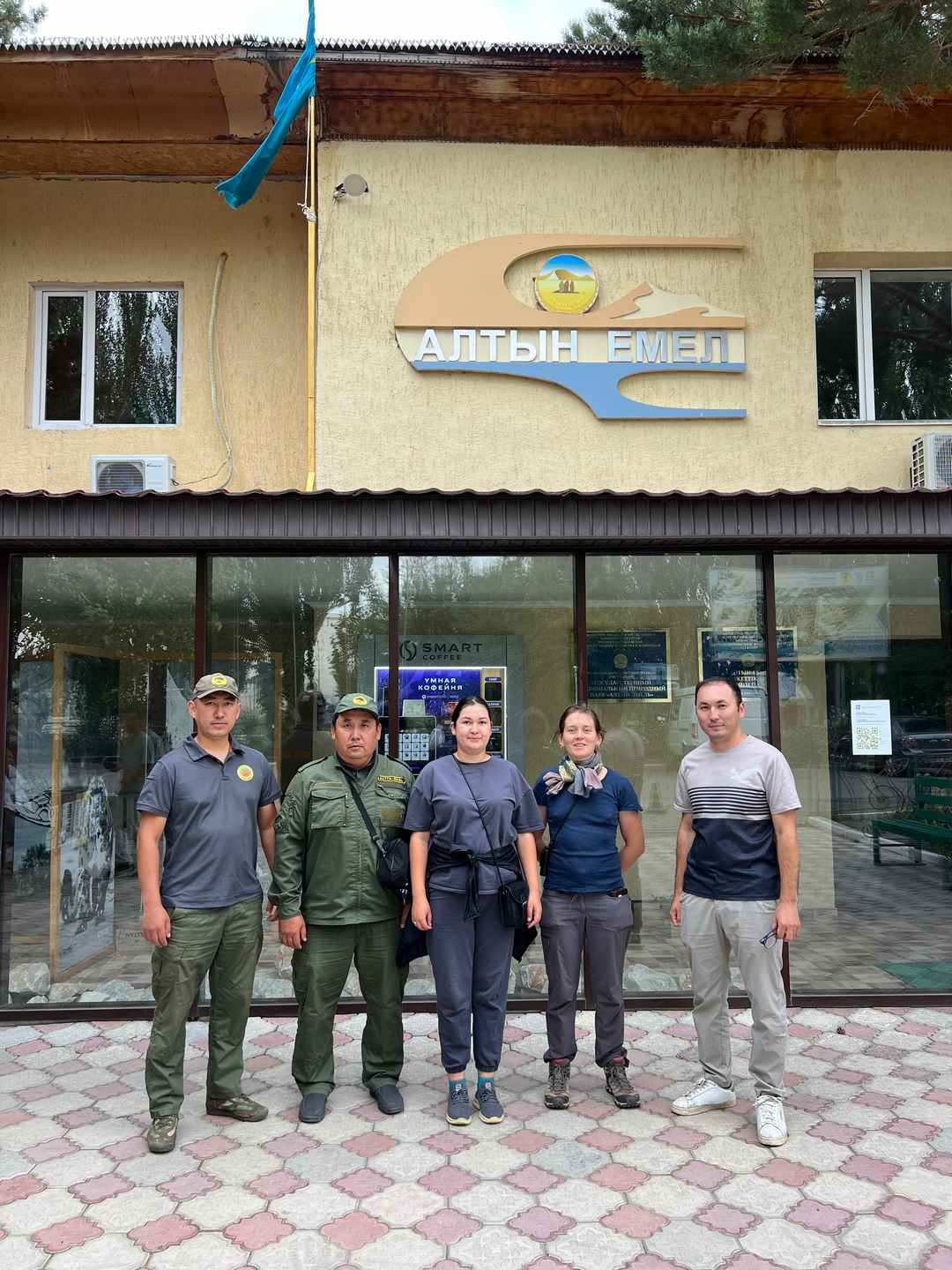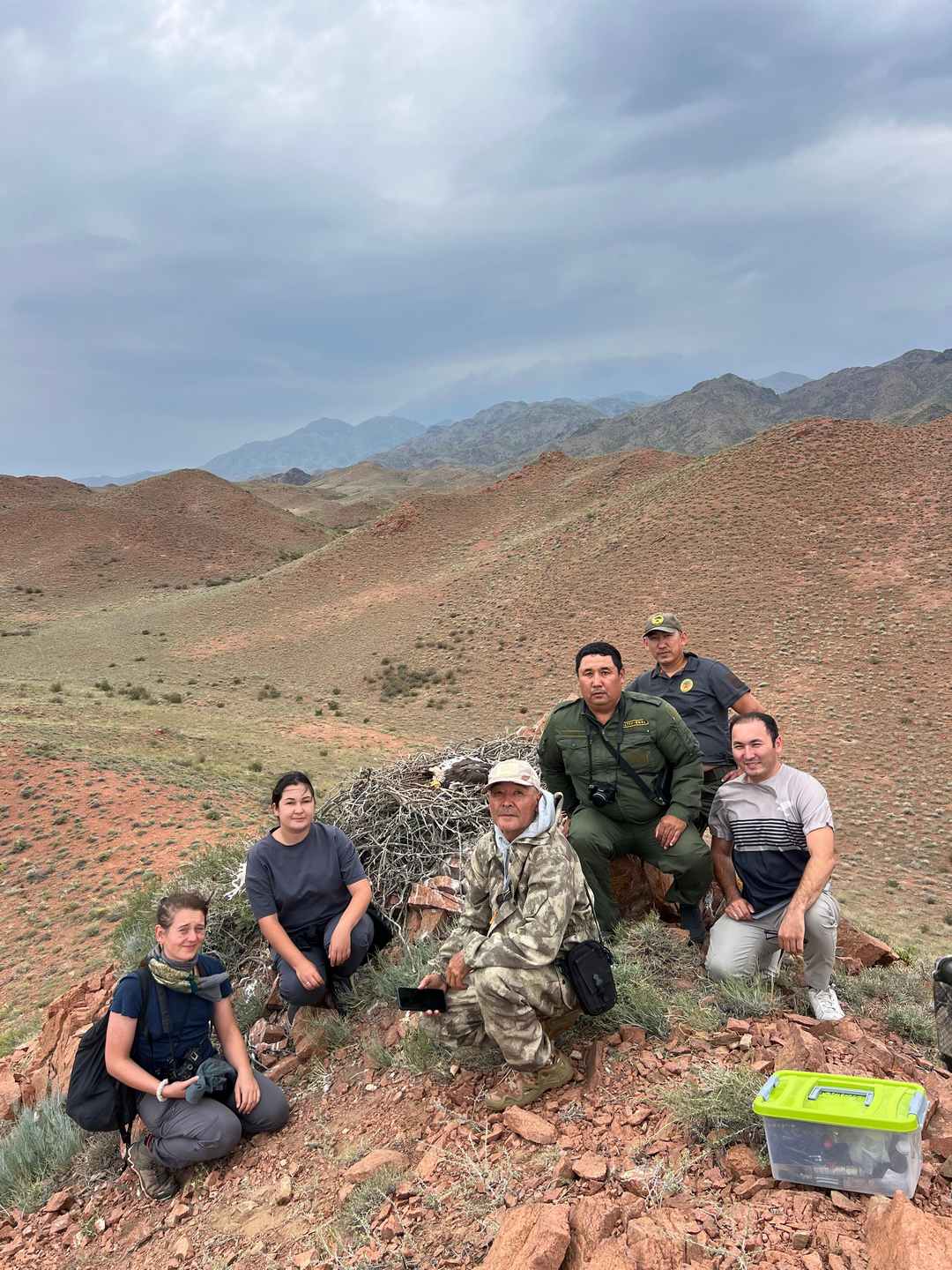Work was carried out in the “Altyn-Emel” State National Nature Park to ring nestlings of the Steppe Eagle (Aquila nipalensis) – a rare raptor species listed in the Red Book of Kazakhstan. Participating were B.T. Berdikulov and E.V. Akentyeva from the Institute of Zoology’s Ornithology Laboratory, together with staff from the Scientific Information and Monitoring Department of the park.
The Steppe Eagle is classified as a declining species (Category II) in the Red Book of Kazakhstan, meaning its population is noticeably decreasing and faces a real risk of disappearance in the wild without protective measures.
On June 20, two nestlings from a single nest in the park were ringed. A camera trap was installed nearby for ongoing observations, and GPS trackers will soon be fitted before the young eagles take flight. These measures aim to study the species’ biology, monitor population trends, and map migration routes.
NOTE: Where does the Steppe Eagle nest?
The Steppe Eagle builds nests in diverse locations:
On the ground – on plains, hills, mounds, among shrubs and tall grass.
On man-made structures – often on power line poles, hunting towers, drilling rigs, and even landfills.
In trees (rarely) – in forest-steppe and mountain zones on saxaul, poplar, birch, and juglans.
The nest is massive – up to 1 m in diameter and 0.5 m high. Typically the female builds the nest and the male supplies material. There are usually 1–2 eggs, and generally only one chick survives – the stronger one. In abundant food years (e.g., with ground squirrel colonies), both chicks may survive.
Ornithologists estimate that 70–80% of the world’s Steppe Eagle population resides in Kazakhstan. Yet in recent decades numbers have steadily declined due to habitat loss, collision with power lines, poisoning, hunting, and poaching.
Therefore, field efforts to ring and monitor these birds are crucial. Ringing provides data on individual survival, movements, threat factors, informs effective conservation measures, and refines protection programs.
Collaborative efforts by scientists and park staff not only safeguard raptors in Kazakhstan but also help build a national database of ringed individuals—valuable for both domestic research and international programs on migration and biodiversity conservation in Central Asia.
Photo: Altyn-Emel NP
27.06.2025




